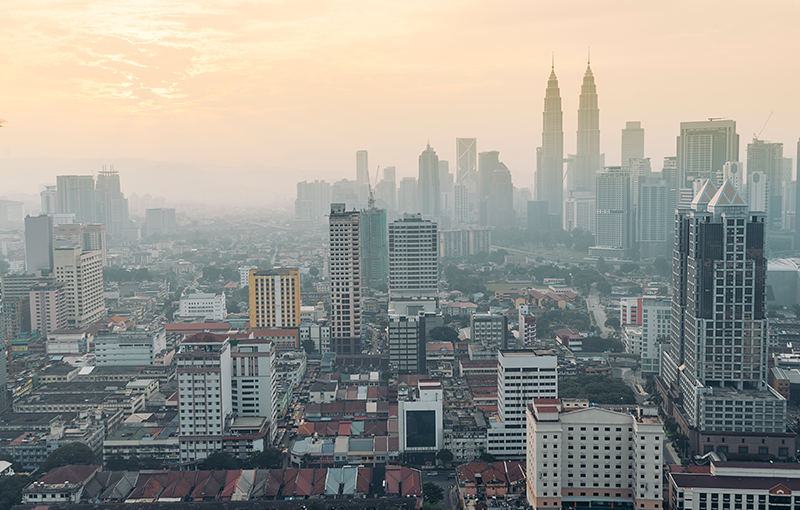You might have seen them at the cinema, the coffee shop, or the latest bookstores, there are now more Malays than ever living in urban areas in the country such as Kuala Lumpur, Johor Bharu, and Georgetown. Most Malaysians however would be surprised to find out that the existence of the mass urban Malay population is still a relatively new phenomenon. Back in the 1970s, less than 15% of urban dwellers are Bumiputera but the number has now swollen to over 56% in recent years.
Urban Malays have indeed been increasingly dominating the urban areas which is a good sign of economic progress for the community. Urban areas are generally known to offer better economic opportunities and a chance for an occupational shift from agricultural to business, trade, service, and professional employment. Nevertheless, the increased urbanization rate of the Malays can be a cause for concern if the population starts to lose their Malay identity in the process.
Many Malaysians would agree with the assertion that it is now more common than ever to come across urban Malays who are not able to converse fluently in their mother tongue. This is especially true amongst the younger Malay population who attended private schools, international schools, or non-Malay vernacular schools. These institutions are often claimed to be the culprit but one could also argue that what school they choose to go to is not a reasonable excuse for them not understanding the national language. Perhaps the underlying reason for this phenomenon is deeper than we first imagine as language is often said to be the soul of a nation, its decline is then a clear reflection of ours.
In addition to the higher prevalence of urban Malays being unable to speak the Malay language fluently, many urban Malays are if to be put bluntly completely ignorant of their history. Discourse on Malay history is often constrained within the era of the Malacca sultanate, despite the history of the Malays being much richer and stretches back thousands of years before then. Accurate historical information on the Malays before the era of the Malacca sultanate appears to have been lost in the memory of most Malays, this is likely due to Malay history not being taught comprehensively enough in the education system and has not been made integral to the nation’s mainstream thought despite its obvious importance.
The lack of a strong Malay identity can perhaps be further attributed to the fact that the community had been under 500 years of colonization by foreign rule before achieving independence. The colonization by the Portuguese, the British, the Japanese, and then the British again have adversely impacted the Malays and their culture. Under the colonised rule, the Malays were only able to practice their cultures if and when it is allowed by their colonial masters. At the same time, these colonial masters attempted to impose their own culture on the Malay populace, for instance, the Malays were once mandated to bow to Japanese soldiers during Japanese rule.
The challenge to develop a strong Malay identity then continues even after achieving independence as the community had to grapple with the fact that the country must now be shared with other racial communities, people that had been allowed to migrate into these lands during the British occupation. The mutual acceptance of the different races eventually led to the formation of Malaysia, a country that now prides itself as a melting pot of many different ethnicities, languages, and religions.
Albeit regarded as a melting pot, the dispersal of the different racial groups is not evenly spread throughout the country. States such as Kelantan and Terengganu have very little diversity and are homogeneously Malays even today. The Malays make up more than 95% of the total population in the two states. That is vastly different compared to Klang Valley where diversity is often the norm. Kuala Lumpur for example has a population mix of 46% Bumiputera, 43% Chinese, and a 10% Indian population.
The experience of living with other racial groups in Malaysia thus varies greatly from state to state. The Malays living in the more urban part of the country where there is more racial diversity are thus more exposed to the other racial groups and are more likely to interact with them in their daily lives. Likely, this higher socialization rate of the urban Malays with their non-Malays counterparts in urban areas has had an impact on their psyche, beliefs, perceptions, and perhaps even their outlook on their racial identity.
Facing the more recent threat of Western and East Asian cultural influence like the ones brought about by Hollywood movies and K-pop bands, the Malay community must take steps to ensure that their culture is not taken for granted and forgotten especially amongst the Malays more susceptible to influence living in urban areas. It is high time for the Malays in Malaysia to find new ways to reinvigorate their cultural practices. The government should also play its role in empowering the Malay culture, a luxury that many millions of Malays scattered across the region simply do not have as many are minorities in their country with Brunei as the sole exception.
At least 8.7 Million Malays are living in Indonesia, 600,000 in Singapore, 500,000 in the Philippines, and 330,000 in Brunei. The Malays scattered throughout the region not only share biological traits with the Malays in Malaysia but also share a common history and cultural practices. As the country that consists of the most Malay population in the world, the responsibility to preserve the Malay identity bears heavily on the shoulder of the Malays in Malaysia. The phrase famously attributed to Hang Tuah “Takkan Melayu hilang di dunia” (Malays will never disappear from this earth) can only remain true if proactive actions are continued to be taken to ensure that the Malays stay true to their roots and are properly educated on the importance of their culture, language, and history.
